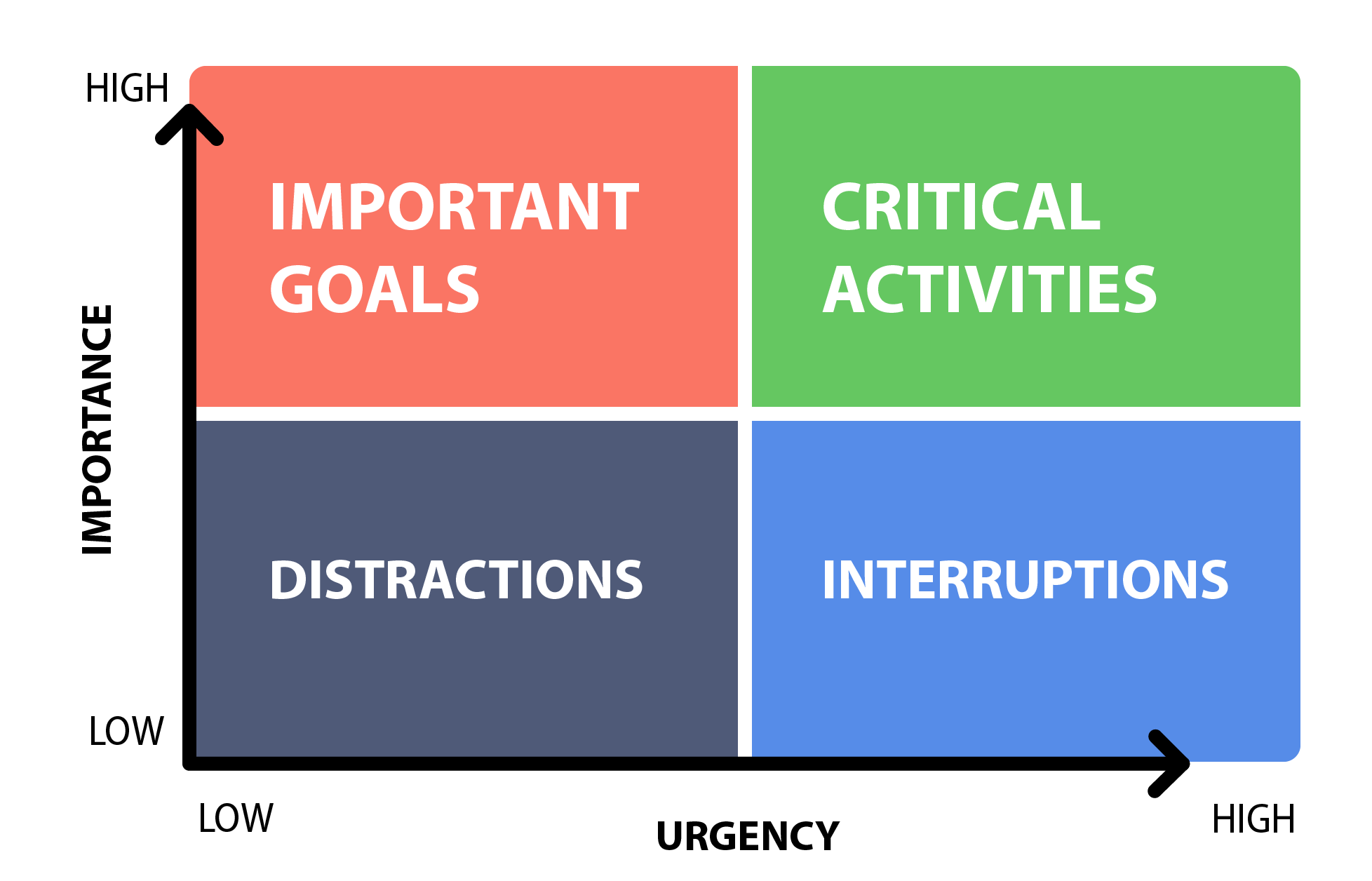In the cutthroat world of B2B sales, any second not spent on selling could be an opportunity lost. That’s why top-performing sales teams follow best sales time management practices as part of their sales playbook.
Consider time management to be the equivalent of listening skills in communication. In other words, you can’t even begin to assess your accounts realistically, let alone strategically, unless you grasp the value of time.
What makes time management even more critical is that it is frequently ranked as one of the worst talents possessed by both salespeople and managers. It came as a shock when a SalesFunnel study on over 700 sales reps concluded that almost two-thirds of their time (64.8%) is spent on non-revenue generating tasks.
Here are the top three time killers for a sales rep:
1. Logging prospects into the CRM
Despite massive automation in the sphere of sales and marketing, data entry work is frequently still carried out by hand. Businesses frequently purchase contact lists for their sales staff to prospect, which they must manually add into their CRM. Given that sales professionals may have hundreds of such contacts each day, they frequently blame CRM usage for lack of sales time. The issue here isn’t with CRM; it’s with manual entry, which creates a bottleneck.
2. Researching leads
Finding the correct people for prospecting is another area where SDRs waste a substantial amount of time. They could spend hours looking for someone’s contact information. Other times, they may research a firm to assess whether or not it fits into their ICP, such as the size of its staff, the technology it employs, any fresh sources of funding, and so on. All of this takes time, which they could have spent talking to prospects instead.
Read About – Psychographic Intelligence
3. Placing futile calls
Even when an SDR has identified an ideal prospect, getting in touch with them can be difficult. Emails may go unanswered, and phone calls may be rejected by the gatekeeper. According to studies, a direct-dial phone number is 46% more likely to connect an SDR. This rises to a stunning 147% at the VP level. Because most data providers do not give direct dialing, the majority of SDR calls go unanswered.
So, how can you ensure that you are on the right of effective time management? Maybe you can automate repetitive processes, incorporate tools, and more into your playbook if you wish to manage your time more successfully.
To counter-attack the time-killers, we will share some ideas and pointers on how to better organize your time and remain on top of a heavy workload.
Effective Time Management Hacks
1. Task Prioritization is the Key
When you have a long list of your daily and new tasks, always prioritize. Some items might seem like a short chore, but you are taking out those few minutes from your selling time.
There are many metrics and methods designed for effective time management. The most used sales time management model is – Eisenhower’s Urgent/Important Principle.
Avoid putting your efforts into the tasks that you could have spent less time on – for instance, preparing a detailed presentation for a client with a low spending ability. You are probably missing the crucial time that you could have spent on planning to close a bigger deal in the decision stage.
This simple principle assists you in determining your priorities and determining which of your activities are significant and which are merely distractions.
2. Streamline Your Sales Process
If your sales process isn’t well-thought-out and thoroughly optimized, being psychologically prepared won’t help you. Begin by ensuring that you are only working with the top leads. Sit down with your marketing staff, if you haven’t already, and work out how you can optimize your lead generation process together. Align your thinking and resources, then use them to attract the correct leads. Make sure you have a solid qualification procedure in place and constantly share improvements.
Using sales intelligence tools like SalesIntel to find companies that match your ICP and quantify the total addressable market. You can then target your marketing and sales efforts where it counts. Access the data that will help you at every stage of your sales process – from research and prospecting to closing, upselling, and cross-selling. And, move it directly from SalesIntel into your CRM without manual data entry.
3. Save Time Prospecting
Prospecting is a difficult task. Nearly 40% of sales professionals say that it is the most difficult and critical aspect of the sales process. You must determine the optimal time for prospects to reply to your emails or phone calls. Cold calling is considered dead. Cold emails are ineffective. What sells these days are hot calls and warm emails.
As a sales professional, you should have insights about their prospects without wasting time researching and navigating around gatekeepers. You will need better data and technology solutions to cut down on redundancy and increase the value of each call to do this.
Prospecting relies heavily on data. You must ensure that you obtain correct B2B data to reach the appropriate decision-makers at the appropriate time. By far the best blend of old-school marketing and new-age automation for driving more income in the digital world is arming your outreach with B2B data knowledge. With the highest number of direct dials of decision-makers, SalesIntel gives you access to millions of human-verified contacts to get you started on selling.
4. Focus on Pipeline Priority
What system do you employ to ensure that you only speak with the most promising prospects?
When it comes to sales pipeline management, all that glitters isn’t gold. There will be businesses or deals that we think to be fantastic that turn out to be anything but. Only 20% of your prospects may provide 80% of your money. What are the ideal possibilities? What are their distinguishing features?
Determine your historically ideal clients and set up markers and checks to help you filter out the best leads and opportunities. Always work on your main priorities and strive to drive the pipeline forward. To ensure you are quick at identifying the low-hanging fruits, you should follow a strong lead scoring model.
However, setting up the lead scoring model is not a cakewalk. As a result, it often takes a considerable amount of time to set up the process, monitor, and improve it.
Here’s where SalesIntel’s buyer intent data steps in. SalesIntel helps you uncover your prospect’s purchase signals based on the intent topics that are being extensively researched by specific organizations. Then, you immediately know which prospects are already engaged with the buying process and open to a conversation. No more worries about figuring out priority leads.
5. Save Time Using Direct Dials
A typical salesperson makes about 52 sales calls every day on average. However, how many of those phone calls result in actual conversations? And how many of those encounters result in a step forward in the sales process? The average call-to-conversation conversion rate is 9%. Then only 23% of those interactions result in an appointment. The percentage of clients who proceed increases as the sales process progresses, but only because the pool of prospects who are still interested shrinks dramatically.
As mentioned earlier, studies suggest that via direct dial, an SDR is 46% more likely to connect. At the VP level, the likelihood of connecting jumps to a stunning 147%. As a result, you’ll have a better chance of producing more sales in the long run.
SalesIntel provides the largest coverage of human-verified work mobile numbers on the market, with over 48 million numbers. Our research team re-verifies mobile numbers every 90 days to assure data accuracy. A study by ScaleX revealed that sales reps are 7x more likely to reach prospects using SalesIntel work mobile numbers compared to switchboards and even direct desk phones.
Read The Ebook on How to Master the Art of B2B Selling
Manage the Time. Don’t Let Time Manage You.
Working smarter, not harder, is the secret to time management for the busy salesperson. Remove all distractions, prioritize, and concentrate on the most crucial task at hand: selling.
Also, make sure you’re using the most effective technologies like SalesIntel that help you boost your sales process as a whole. You will be more productive, less stressed, and more successful if you control your time rather than allowing it to manage you.





